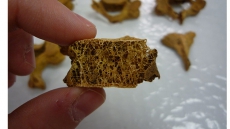“Soon there will be two kinds of people in the world. Persons that have Alzheimer’s and persons that know someone that has Alzheimer’s,” says Dr. Mehmet Oz. Alzheimer’s, the most common form of dementia is a debilitating illness that gets worse over time. As described by renowned cardiothoracic surgeon and TV personality Dr. Oz, it is a growing illness becoming more and more prevalent within our communities. According to research conducted by the American Journal of Public Health, by 2050 1 in 85 people worldwide will be affected by Alzheimer’s and the numbers affected by dementia will approximately quadruple. Those are terrifying numbers as Alzheimer’s is the 6th leading cause of death in North America as described by the Alzheimer’s Association.
But are we all destined to be diagnosed with Alzheimer’s? Aren’t Alzheimer’s and dementia the same thing? Isn’t it a normal part of aging?
Well, no. They’re not the same thing and no, it’s not a normal part of getting older. Unfortunately, they’re getting diagnosed more often within our senior communities. Creating greater awareness about these illnesses can hopefully provide the support and attention needed in generating answers.
ALZHEIMER’S DISEASE
Alzheimer’s Disease (AD) is a neurodegenerative brain disorder that results in an individual’s loss of cognitive functioning, usually with memory loss being the first key symptom exhibited. There is currently no cure for this illness and it progressively gets worse over time ultimately leading to one’s death.
Difference between Dementia & Alzheimer’s
As the terms dementia and Alzheimer’s are often used synonymously, it’s important to understand they are not the same illness. Forms of dementia exist which are completely unrelated to Alzheimer’s, whereas AD accounts for nearly 50-70 per cent of all dementia cases.
Dementia isn’t a disease as much as it is a collection of symptoms including memory loss and diminished reasoning ability. It can be caused by a myriad of conditions and as it progresses, can have severe impacts on an individual’s ability to function independently.
Contrarily, Alzheimer’s is a disease of the brain that slowly impairs memory and cognitive functioning. Unfortunately, damage to the brain begins years before symptoms are exhibited and cannot be reversed.
As your risk of developing either one or the other increases as you age, they are both not considered normal parts of growing older. Symptoms usually develop over the age of 65 and worsen over time.
Causes & Physiology
The exact cause for the onset of AD and its degenerative progression are still relatively unknown, but several competing hypotheses do exist. These include a possible genetic component, a lack of the neurotransmitter acetylcholine, perhaps the abnormal production of specific proteins responsible or normal cognitive functioning as indicated by the Alzheimer’s Society of BC.
“The APOE gene affects risk of Alzheimer’s and is present across different ethnic groups, although the effect appears to be stronger in Japanese compared to Caucasians, while its effect is similar to Caucasians in South Asians, and weaker in Hispanics,” explains Dr. Robin Hsiung, neurologist and assistant professor at UBC’s Hospital Clinic and Department of Medicine, respectively.
What is certain about AD is the development of plaques or lesions in the brain, which consist of neurofibrillary tangles inside nerve cell bodies. Affecting the brain’s cerebral cortex and associated areas, these plaques contribute to the loss of neurons and their synapse connections within the brain. Neurons are responsible for sending electrical and chemical responses and run throughout an entire individual.
In comparing MRI images of a healthy brain with one afflicted with AD, you can clearly observe the differences between the two. The AD brain shows significant shrinkage and is plagued with plaques throughout the brain.
Diagnosis & Progression
The disease is divided into several stages, with symptoms negatively progressing with the advent of each additional stage. Short term memory loss as previously mentioned and forgetting occasional things are exhibited earlier on. This progresses from absent-mindedness and confusion to speech impairment and repeatedly initiating the same conversation. The latter stage of the illness can involve aggressive behaviour, diminished cognitive reasoning and abusive or anxious behaviour.
Because AD is degenerative, people affected increasingly rely on others for assistance. Anyone who has been affected by this terrible illness, whether patient or caregiver, understand how incredibly devastating this disease is and how much patience is required in helping those affected.
CORRELATION WITH SOUTH ASIAN COMMUNITY
According to the World Health Organization, the fastest growth of dementia in elderly populations is taking place in China, India and their South Asian and Western Pacific neighbours. Additionally, a recent study conducted by the Alzheimer’s Society of UK predicts nearly a 7-fold increase in the prevalence of dementia in Black, Asian and other minority ethnic groups within the United Kingdom over the next 40 years. This is nearly twice the number of people expected to be diagnosed with the illness as compared to the whole UK population.
Findings like these indicate a growing correlation with the prevalence of dementia and AD within South Asian populations. But why such a high growth rate in South Asian communities? It would seem that this type of illness wouldn’t discriminate in who it would affect. Further examining these results has revealed insight into what could account for this growing trend.
In general, much of the increase is attributed to the world exhibiting an aging population trend, which is more significant in developed countries. As access to healthcare increases with the development of better technology and medications to treat illnesses, people are living longer. The increased lifespan means the risk of developing dementia or AD becomes greater in all populations.
With specific respect to South Asian communities in developed nations, they are under-represented in support available and are often diagnosed at later stages of the illness. This is due to the lack of culturally sensitive services available as most elderly South Asians do not use English as their primary language. This makes it difficult for them to reach out.
“A diagnosis of dementia can be a scary and confusing experience, yet cultural elements such as language and families’ close-knit bonds can make it harder for South Asian families to reach out and get information and advice. Many people don’t know there’s support available to them; let alone how to access it,” explains Diana Barbosa, programme development manager for the Alzheimer’s Society of UK.
Furthermore, there is a negative stigma attached to those suffering from AD or dementia-like symptoms and this is certainly the case with South Asians in both developed and developing nations. People don’t want to be labelled as becoming old where forgetfulness and acting odd are attributed to aging and in extreme cases, having gone mad. Evidence shows that knowledge and understanding about dementia and AD in these communities are low, which leads to the taboo’s and negative myths associated with developing such conditions. The stigma and general lack of awareness makes it even more difficult to get the help and support that’s needed.
Another correlation between dementia, AD and South Asian communities are the links to high blood pressure, diabetes, stokes and other cardiovascular and chronic diseases. As these population groups are more susceptible to these types of cardiovascular illnesses, they become higher risk candidates for developing dementia or AD. This is presumed to occur as cardiovascular and chronic illnesses place greater stress on the brain’s vasculature network, which weakens it and makes them more susceptible to damage.
“All vascular risk factors (hypertension, diabetes, high cholesterol, cerebrovascular diseases e.g. tiny strokes) are also risk factors for dementia, although it is not clear what is the mechanism linking them together. I suspect that it is interaction of one or more pathologies that make the symptoms of dementia worse than if only one type of pathology were present. One of the aims of my current research projects is to try to clarify this interaction effect,” says Hsiung.
DISEASE MANAGEMENT
Medication, Lifestyle & Diet
As previously mentioned, current treatments only help with alleviating some symptoms of the disease but do not cure it nor prevent its progression. Additionally, people only seek out help when dementia and Alzheimer’s like symptoms get really bad. Delays in getting diagnosed increases the risk of the disease progressing at elevated rates.
Certain medications help alleviate AD symptoms, but consistent social interaction and caregiver support are the greatest ways to manage patients suffering from AD. Aspirin and medications used to treat cardiovascular issues, in addition to a healthier lifestyle, help in reducing the likelihood of developing AD. Also engaging in mentally stimulating activities such as reading, solving puzzles, playing musical instruments and board games and partaking in regular social outings are paramount in keeping the synapses in one’s brain and their connections thriving. Neuroplasticity is proving to be an important tool in combating and helping treat AD patients.
Also maintaining a healthier diet in general leads to less health complications later on in life and this is certainly the case with dementia and AD management. Get plenty of exercise and avoid eating diets rich in saturated fats and simple carbohydrates.
Effects Of Chai Tea On Alzheimer’s, Protective Or Destructive?
Currently there is not enough evidence to suggest a protective or destructive correlation between chai tea and Alzheimer’s patients. It has been thought that trace amounts of aluminum present within certain sources of drinking water may have something to do with it, but again additional research is needed to conclude any sort of connection if any. Furthermore, coffee and herbal teas such as green and black tea may lend a protective effect against developing AD, which is attributed to the amounts of caffeine contained with them.
The mind is a muscle and like any major body part, it needs regular exercise to keep it sharp and focused. Taking care of one’s body and mind is essential to maintaining good health and there’s no difference when it comes to helping prevent the onset of dementia or Alzheimer’s Disease. As of now, they are not curable; doesn’t mean they aren’t preventable.
Keeping one’s mind and body active are the best preventative measures an individual can take. If already suffering from dementia or AD like symptoms, seek out help immediately. The earlier on these debilitating illnesses get diagnosed, the easier it is to make arrangements for one’s future and manage them somewhat effectively.
“When there is social support available, people with mild memory difficulties often continue to compensate quite well and only when there are serious problems with daily activities that they show up to the doctor’s office,” says Dr. Robin Hsiung.
LOCAL ACTIVISM
Making recent headlines in an attempt to raise awareness on Alzheimer’s, comedian and Vancouverite Seth Rogan took to US Congress on February 26, 2014 to deliver an emotional plea to convince Washington politicians to provide more funding for those affected from the illness. His comedic and highly touching speech stems from his mother-in-law, who is suffering from AD and commented on the negative stigma attached to those suffering from it. Of the 18 Senators, who sit on the subcommittee on Labour, Health and Human Services, only two stayed behind to hear his testimony. “Indicative of a mentality that we find so frustrating…it seems like these people don’t care,” Rogen explained to reporters afterwards, sharing his perspective on the Senators getting up to leave before he was set to speak. Rogen and his wife have also created ‘Hilarity for Charity,’ an organization aimed at raising awareness and funds for AD research.






